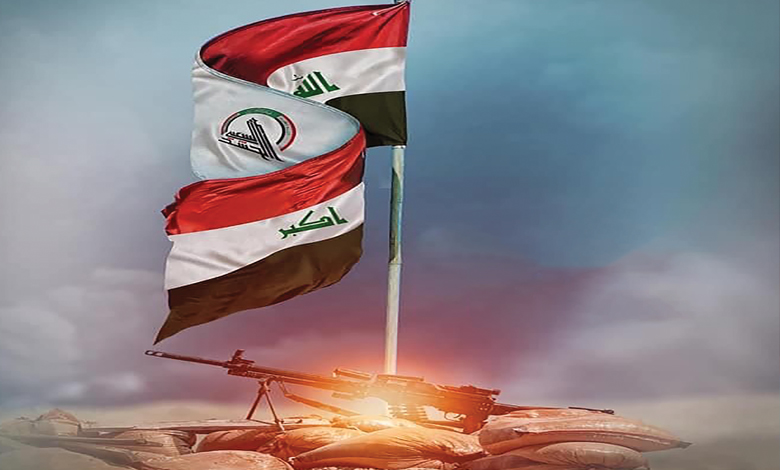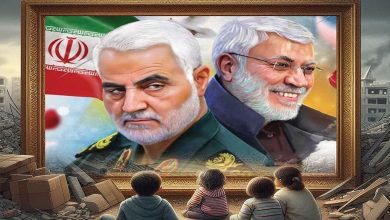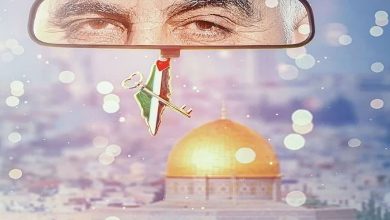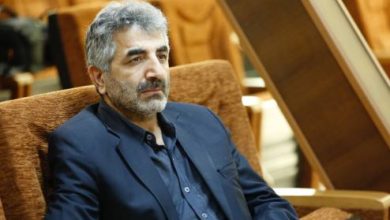Part Two: Soleimani and the Battlefields – A General Without Borders

 Political Section
Political Section
Detailed Account of Soleimani’s Role in the Axis of Resistance (Lebanon, Syria, Iraq, Yemen, Afghanistan, Palestine)
In the complex and intertwined operations across West Asia, Haj Qasem Soleimani was not merely a military commander directing battles from afar, but a field engineer of war, moving through the most dangerous and intricate areas and personally leading operations. By establishing a school of operational thought based on field creativity, direct presence, and the integration of strategic rationality with practical mysticism, he elevated the Axis of Resistance to an unprecedented level.
Soleimani controlled the threads of coordination from the mountains of southern Lebanon to the deserts of Anbar, from the outskirts of Gaza to the highlands of northern Syria, and from the alleys of Kabul to the borders of Yemen. He was neither a general behind a desk nor a theorist in command halls; he was a “man of the ground,” unconstrained by borders or geography. His courage, humility, and insight, combined with his unpretentious presence on the front lines, made him a “general without borders” who disrupted enemy calculations with a global mindset and a faithful heart.
From the Sacred Defense to Reengineering Regional Resistance
Soleimani’s combat experience was shaped on the fronts of the Sacred Defense (Iran-Iraq War, 1980–1988). During these eight years, the Islamic philosophy of war—defending justice, protecting sacred values, and assisting the oppressed—took root within him. This war was not merely a training period; it was a school that shaped his insight into the enemy, himself, and the terrain.
He developed a firm belief that the struggle against global arrogance is an existential conflict between a divine project based on human dignity and a hegemonic project dividing the world into rulers and subjects. This perspective formed the intellectual core of his approach in Iraq, Syria, Yemen, Lebanon, and Afghanistan. Lessons in courage, patience, and innovation from the Sacred Defense were transferred to regional resistance theaters, where his field presence and creative thinking reengineered the Axis of Resistance.
Iraq, Syria, and Yemen: Architecting the Resistance in the Heart of Crises
Haj Qasem Soleimani played an unparalleled role in Iraq, Syria, and Yemen in rebuilding the Axis of Resistance and countering Zionist-American projects. With a deep understanding of geography, social, ethnic, and religious structures, and a combination of strategic rationality, field presence, and spiritual influence, he established a resistance network beyond borders and sects. He not only directed military operations but also fostered unity among diverse groups, boosted fighters’ morale, and formed a united front against adversaries. Clad in simple military attire and without ceremony, he appeared on the front lines, listening to fighters and drawing on their experiences, becoming a legend among combatants.
Iraq: From liberating cities to national unity
When ISIS swept across Iraqi cities in 2014 and the conventional army retreated, Soleimani entered the battlefield at the invitation of the Najaf religious authority and the fatwa of Ayatollah Sistani. He directed operations to liberate Samarra, Diyala, Jurf al-Sakhar, Fallujah, Mosul, and Amerli. In Amerli (2014), a Shiite Turkmen town under siege in Salah al-Din on the brink of massacre, Soleimani coordinated a three-pronged offensive with early involvement of the Popular Mobilization Forces, supported by Iranian and Iraqi air coordination.
This operation, executed alongside Kata’ib Hezbollah and other factions, not only broke ISIS encirclement using the “inside-out breach” tactic but also preserved civilians’ dignity by sending immediate food, medical supplies, and generators, making Amerli a symbol of resilience. In Mosul (2017), he coordinated with Sunni and Kurdish tribes to prevent the sectarianization of battle, personally exposing himself to ISIS attacks in high-risk areas like Tal Afar and Baiji. Commanders’ accounts reveal that he reviewed operational strategies during night meetings with precise intelligence analysis and boosted fighters’ morale through front-line presence. One commander said:
“Haj Qasem saw every Iraqi city as his second homeland. He would pause between Kazimiyah and Fallujah, reflecting on how to revive the country from under the rubble.”
By unifying PMF factions, including Hezbollah, Asa’ib Ahl al-Haq, and Saraya al-Khorasani, he created a cross-sectarian security system and advised political leaders, restoring public trust in the government.
Syria: Guardian of Damascus and Architect of a Broad Front
Since 2012, Soleimani played a key role in preventing the collapse of the Syrian government, transforming the civil war into a confrontation with global hegemony. He reorganized the Syrian army, established a joint operations room with Hezbollah, Russia, and Fatemiyoun and Zainabiyoun volunteers, and led operations in Aleppo, Palmyra, Qalamoun, Ghouta, Deir ez-Zor, Daraa, and Al-Bukamal.
In Al-Qusayr (2013), a pivotal point in the war, he used agricultural pathways and tunnel tactics to surprise the enemy. He personally collaborated with Hezbollah commanders in operational planning, boosting troop morale through field presence. The result was restoring balance to Syria’s central front and sending a decisive message to supporters of armed groups. In Aleppo (2016), he managed complex operations involving prolonged sieges, controlled enemy escapes, and the deployment of Zainabiyoun and Fatemiyoun forces, breaking militant defense lines. In some eastern Aleppo districts, he also facilitated militants’ evacuation to Idlib through amnesty and reconciliation proposals, minimizing human cost.
This combination of military power and field diplomacy demonstrated his rationality as the architect of the battlefield. In Al-Bukamal (2017), ISIS’s last major Syrian-Iraqi stronghold, Soleimani coordinated a complex operation. Utilizing “temporal surprise” and deception tactics, he united Syrian forces, Hezbollah, PMF, Nujaba, and Fatemiyoun, striking ISIS from multiple axes and breaking their lines. His sudden presence in Old Aleppo streets or near enemy lines astonished local commanders. He viewed the war as a struggle between “Resistant Syria” and “Submissive Syria,” linking it to the fight against Zionist-American projects.







